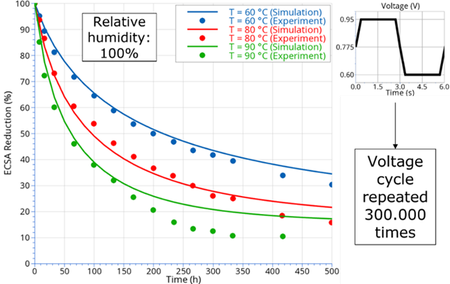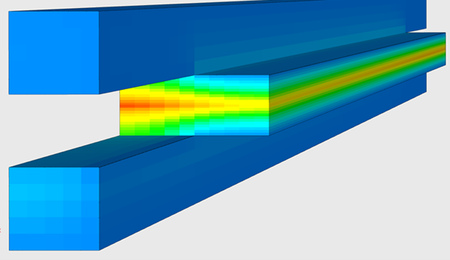AVL Simulation Suite 2024 R2| 17.4 Gb
AVL Suite是用于开发动力总成-动力的来源或转换器(例如,燃料箱和内燃机的总和是一个动力总成)的一套灵活的工具和跨学科解决方案的综合集合。该软件包为您提供了建模,设计,仿真和测试组件所需的所有工具。借助AVL Suite,您可以轻松设计和模拟燃料,电动汽车,卡车,火车和大型发动机的推进力。该软件是AVL List GmbH的产品,专门从事变速箱系统,基于引擎的工具和仿真开发。The software developer Advanced Simulation Technologies (AST) is pleased to announce the availability of AVL Simulation Suite 2022 R1 is a comprehensive solution that covers all aspects of powertrain concept, the e-motor, e-axle, power electronics, fuel cell, battery and control functions layout and integration. Release 2022 R1We are pleased to announce the latest software releases for the following solutions: Virtual Fuel Cell Development – Components and Systems Quick and Easy Task Configuration
If concrete insights are to be obtained when using simulation techniques, then all results and experimental references must correspond. This requires the simulation model parameters to be correctly configured, something that is both essential and simultaneously challenging. Apart from requiring a fundamental understanding of how each individual parameter affects the model, the fidelity of the model and the quality of experimental data also need to be high. Achieving all this can rapidly become very time consuming.
This latest release of AVL CRUISE M, our system simulation tool, offers you a new wizard. The Fuel Cell Parameterization Wizard is specifically tailored for the fast and automated configuration of performance models based on input data from classic steady-state stack characterizations, i.e. polarization curves and/or transient measurement data, reducing your configuration effort from days to minutes.
Figure 1: Fuel Cell Parameterization Wizard workflow
Tracing Reactant Crossover
The existing Proton Exchange Membrane Fuel Cell (PEMFC) Model in CRUISE M now considers the crossover of reactants through the membrane, allowing you to treat the influences of activation losses on the cell voltage, especially at very low current densities, with even greater accuracy.
This is achieved by fully accounting for the diffusion of the reactants and their reaction at the catalyst layers of the opposite electrode. The latter is driven by the partial pressure differences of hydrogen and oxygen in the anode and cathode gas channels.
Figure 2: Reactant Crossover Model
PEMFC Ionomer Degradation
The existing models used to describe chemical degradation in the catalyst layer of PEM fuel cells have been supplemented in CRUISE M 2022 R1 with a model of the destruction of the ionomer, i.e., the degradation of the membrane serving as electrolyte between anode and cathode. The model considers the formation of peroxide at the catalyst layers, its transport through the membrane, and the formation of hydroxyl radicals in the presence of iron cations and protons. The attack of the hydroxyl radicals on the ionomer is modelled by means of four reactions releasing carbon dioxide and hydrofluoric acid as gaseous reaction products. The stressors (inputs) for the ionomer degradation model are the local potential, membrane humidity, temperature and oxygen concentration, and its outputs comprise the time evolution of the ionomer components, the produced gas species, and the change of the membrane thickness and membrane equivalent weight.
Figure 3: Membrane Degradation Model
Simple Coupling of Various Degradation Models
The latest version of the PEMFC Model in CRUISE M allows you to easily couple the Performance Model with the Mechanical and Chemical Degradation Models. This enables the easy determination of the effects of various stress factors such as catalyst voltage and temperature, hydrogen and oxygen concentrations, as well as catalyst relative humidity on, for example, exchange current density, membrane thickness and membrane equivalent weight.
Based on the 1D discretization of the stack in longitudinal and channel-flow direction, the different aging behavior at the different stack positions can be simulated. Furthermore, the open model architecture allows you to easily incorporate custom degradation models and to benefit from the high-fidelity and fast stack model integrated in CRUISE M
Figure 4: Closed Coupled Degradation and Performance Model
Simulate Solid Oxide Fuel Cells and Electrolyzers at System Level
The new Solid Oxide Stack Model in CRUISE M provides the ability to perform comprehensive simulations of solid oxide fuel cells and solid oxide electrolyzers on a system level.
The 1D model is based on a multi-physics approach that combines gas-dynamic, thermal, chemical, electrochemical, and electrical aspects in one. Here, the electrochemical conversion of hydrogen and carbon monoxide follows the classical Butler-Volmer equation. Thereby, both are embedded in a thermodynamically consistent, reduced dimensionality approach. It is this consistency of the first principal equations that allows a smooth transition between fuel cell and electrolyzer operation driven only by reactant availability and current direction. If required, additional Arrhenius-type equations can be adopted for water gas shift, methane reforming and ammonia decomposition.
The physical depth and ease-of-use is rounded off by a robust and real-time capable solver. The computational speed and robustness offered makes this new model the first choice for HiL-based applications.
Figure 5: Solid Oxide Fuel Cell and Electrolyzer Model
Integrating the High-Pressure Tank
The introduction of a high-pressure tank component allows studies to be performed on the actual tank volume, heat losses to the ambient, as well as charge and discharge through corresponding valves, including a relief device regulated by a dedicated control function.
The entire tank model is composed of atomic CRUISE M components such as plenum, restriction, etc. that are placed in a masked subsystem. On the input top-level, all key model parameters are made available for an easy and straightforward access. If needed, the openness of the approach also allows drilldowns into the subsystem and the refinement of the component configuration according to the actual needs. The well-known Joule-Thomson effect is taken into account by activating the real-gas treatment in the gas composition settings.
Figure 6: High-Pressure Hydrogen Tank Model
Ability to Calculate Realistic Aging Processes
With the current release 2022 R1, AVL FIRE M offers you models for platinum dissolution and redeposition in the catalyst layer. This includes Ostwald Ripening, i.e., the effect of platinum dissolution on particle size, as well as for particle detachment and agglomeration. In addition, a Particle Size Distribution (PSD) Model is available that describes the change in catalyst particle sizes due to degradation effects. In combination with the already available ionomer degradation models, this allows you the detailed analysis of effects such as catalyst layer and membrane thinning, reduction of exchange current density, increase of diffusion resistance in the ionomer film and changes in the local current and heat sources. In addition, the novel sub-cycling numerical solution approach offered in this release provides you the possibility to efficiently simulate a large number of voltage or current cycles over a long duration, e.g. some 100 hours.

Figure 7: Simulated electrochemically active surface area (ECSA) reduction
Low Temperature PEM Electrolyzer
The PEM fuel cell module in FIRE M 2022 R1 has been extended to enable the simulation of PEM electrolyzers with water being the fuel and with hydrogen and oxygen generated as reaction products. The model fully considers the transport of electrons, ions, gas species, and liquid water, as well as the thermal conditions in all relevant domains. The model also covers the hydrophilic nature of the porous media involved, the iridium or ruthenium properties of the anode catalyst, and the properties of sintered or woven titanium in the anode porous transport layer. In addition, convective water transport across the membrane due to pressure gradients is taken into account and the Eulerian multiphase approach is adopted to model the dispersed gas phase within the liquid phase continuum. Accordingly, the property database (PDB) has been extended with new default materials for the PEM electrolyzer application and the material parameter hydraulic permeability has been added for aqueous ionomer materials.

Figure 8: Simulated PEM electrolyzer temperature
The AVL Suite enables the consistent and user-friendly execution of testing tasks. Processes become more efficient through cross-product functions, aligned user interfaces and tools. Compatibility with products of other AVL Suite versions is ensured by AVL Life Cycle Management. This means that productive systems can be extended later at low risk and at optimal cost. Maintenance, updates and modernization of testing facilities are easier to schedule and calculate over the entire system lifecycle. AVL Suite represents AVL's commitment to continuous integration and compatibility of AVL software tools in all testing stages along the automotive development process. AVL CRUISE is the industry's most powerful, robust and adaptable simulation tool for vehicle driveline system analysis and optimization. The application field covers fuel efficiency, driving emissions and performance analyses along the vehicle development process with model re-use from concept design through to HiL and testing. AVL is the world's largest independent company for the development, simulation and testing of powertrain systems (hybrid, combustion engine, transmission, electric drive, batteries, fuel cell and control technology) for passenger cars, commercial vehicles, construction, large engines and their integration into the vehicle. The company has decades of experience in the development and optimization of powertrain systems for all industries. As a global technology leader, AVL provides complete and integrated development environments, measurement and test systems as well as state-of-the-art simulation methods. Product: AVL Simulation SuiteVersion: 2024Supported Architectures: x64Website Home Page : www.avl.comLanguage: englishSystem Requirements: PC **Supported Operating Systems: **Size: 17.4 Gb * Release info: BOOST
BOOST 3D
BOOST HYD
CRUISE
CRUISE M
IMPRESS 3D
EXITE Acoustics
EXITE Piston&Rings
EXITE Timing Drive
EXITE Valve
EXITE Designer
EXITE Power Unit
FIRE CAD
FIRE DVI
FIRE ESE
FIRE FAME
FIRE Spray Data Wizard
FIRE Workflow Manager
FIRE M
TABKIN
TABKIN POST
Model CONNECT
SPA
Design Explorer
IMPRESS Chart
IMPRESS xD
IMPREES xD Dashboard
AVL Simulation Desktop
本部分内容设定了隐藏,需要回复后才能看到